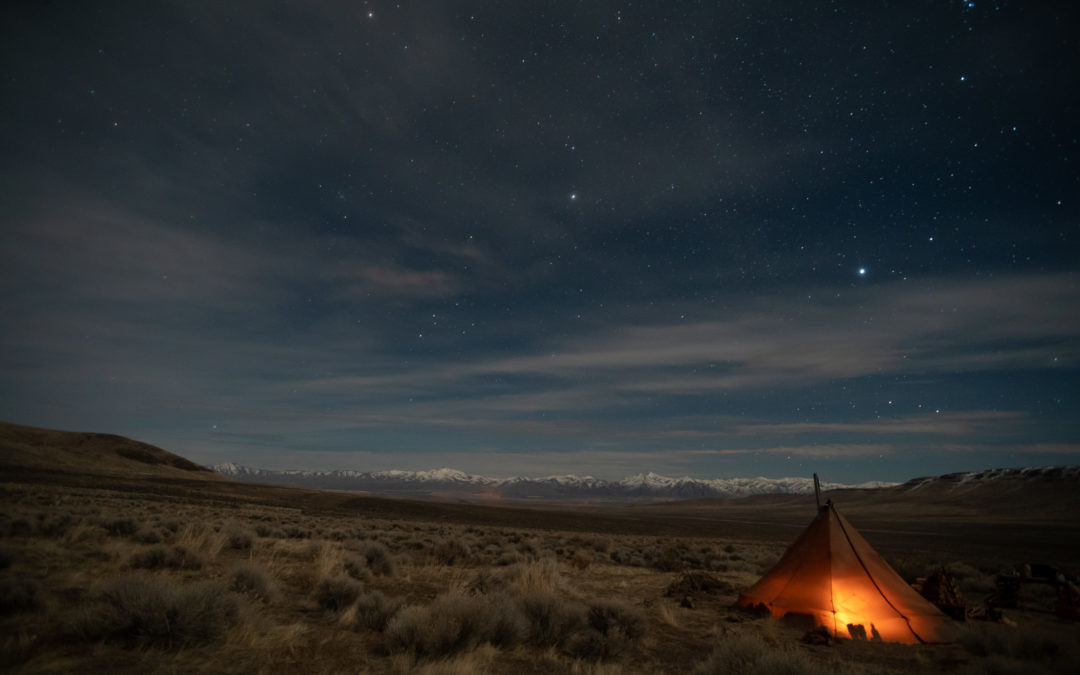How would you know
by Paul Feather
I am watching the light fade as the last day of March is swallowed behind the hills of Thacker Pass. Sheltered in my car and bundled against rapidly dropping temperatures, I wait for the stars that I traveled two thousand miles to see. I wonder what will happen here and if I am one of the last who will enjoy the darkness of this unfettered sky.
You see, I am sitting upon millions of tons of lithium. It is all around me, bound up in the clay, resting in the darkness of the Earth. It has been here for millions of years. Other watchers of these stars may not have known about this curse. Thousands of years ago when Paiute men and women enjoyed this sky, what learned prophet could have seen into the depths of the Earth to know that even after this land was stolen, after it was carved up with roads and stripped by cattle, that even this would not be enough? That men would come chasing lithium for electric cars; they would want to open the Earth in a miles-wide pit, to pulverize the clay, leech it with acid, and pile up new mountains that drain antimony, uranium, and arsenic into the groundwater. They would bring lights to drown out the stars.
Perhaps Thacker Pass will not come to such a tragic end. Perhaps the stars will shine here for years to come; native people and settlers will enjoy this sky, watch the eagles, and laugh at the absurd mating rituals of sage grouse. Perhaps something else is written in these stars, for over the past days I have watched resistance to this mine slowly growing. This is what it looks like: phone calls and interviews; ceremonies and prayers; setup of camp in faith that people will come; discussions of strategy and litigation; communion with stars.
The Environmental Impact Statement (EIS) released by the Bureau of Land Management for the mining company Lithium Americas Corporation doesn’t contain the word ‘star’. Access to an unpolluted night sky—arguably an experience that defines almost every cosmology that has ever existed on Earth—is apparently not an important health and safety consideration. Of course, the EIS predicts leeching of water with heavy metals, so maybe health and safety isn’t actually a concern at all.
There’s a lot of talk around here about the EIS. It’s understandable. People want to know what all this means and how the imminent construction of this mine (already permitted by the BLM) will affect their lives. What does it mean when there’s antimony in the groundwater? Does that even matter if there isn’t any groundwater left? This is all a very rational process.
However, my communion with stars—an experience I share with almost every human to ever live upon this planet, but increasingly few alive today—is not a rational process. To take in the night sky as a whole, unobscured by electric light, and to find oneself within the cosmos is an experience and revelation that humanity has only just begun to try living without. This experiment may not go well. It is disorienting, and we are lost.
For many, resistance to this mine is a rational process: such and such parts per million is just too much uranium dust blowing over the reservation; so many acres of habitat loss will mean extinction for the sage grouse; pumping thousands of acre feet from already overdrawn aquifers would collapse the water system. These rational and quantitative objections are required by the legal systems that administer justice (and injustice) in our society, and without such arguments there is no apparent recourse against the threats that Lithium Americas presents to this place and its inhabitants.
That said, I’d like to suggest that resistance (or successful resistance) does not arise from impeccable rational arguments. The people who stand to make billions of dollars at others’ expense don’t care about well-reasoned arguments. They never have, they never will, and they largely control the systems of power and justice to such an extent that they aren’t shy about publishing an EIS that clearly acknowledges exceedance of NDEP safety standards. Their intent is to jeopardize health and safety; their behavior is coldly rational.
Resistance (or successful resistance) arises not from rationality, but from an intuitive process in which large numbers of people recognize an opportunity to assert their sovereignty and overturn blatantly exploitative systems. This occurs when symbolic interpretation of a given resistance project resonates strongly enough to break people out of their customary complicity with violent systems, and pushes them to defend the Earth and one another. This symbolic and intuitive aspect is necessary for successful resistance, because small numbers of people who are directly affected by projects like this mine do not have the power to directly take on formidable opponents like Lithium Americas Corporation. Outside support is necessary, and that support cannot arise from purely pragmatic (non-symbolic) considerations, because outside participants aren’t directly affected by the project.
This brings me to my question: how would you know that an injustice was severe enough to warrant your intervention if that injustice did not affect you directly? Is it sufficient injustice that water supplies belonging to the McDermitt Paiute tribe are being poisoned so that rich people can have electric cars and call it green? Can the Earth withstand another industrial revolution that replaces fossil fuel infrastructure with renewable development? The sage grouse cannot. How would you know that enough was enough?
Paiute Elders from the reservation are bringing food to Thacker Pass for you to eat when you come and stand with them. They are building windbreaks for your shelter. They believe that you will come. How would you know to answer their call? What call would you answer? Any at all?
At some point, we must step back from purely rational processes and ask ourselves what we are doing here. Have we perhaps become lost among our flashing lights, screens, and drowned out skies? Who are we? What is our purpose here? These are questions of cosmology, and perhaps there are many ways to answer them, but every human since the dawn of humanity has asked these questions in the awe inspired by unfettered skies, and received whatever answer is written there.
I have said all my words. The sky is dark now, and I will listen. Come. The stars are waiting. It is time.
Image by Max Wilbert


I live in the UK, I have lit a candle. My wish is that this mine shall never come to pass, and thacker pass is left in peace.
Paul,
A full arousal of my admiration for your words and thankful for your chance to be connected in a supreme way. A great place to honor the People and the courtship of sage grouse and the stars is at Thacker Pass.